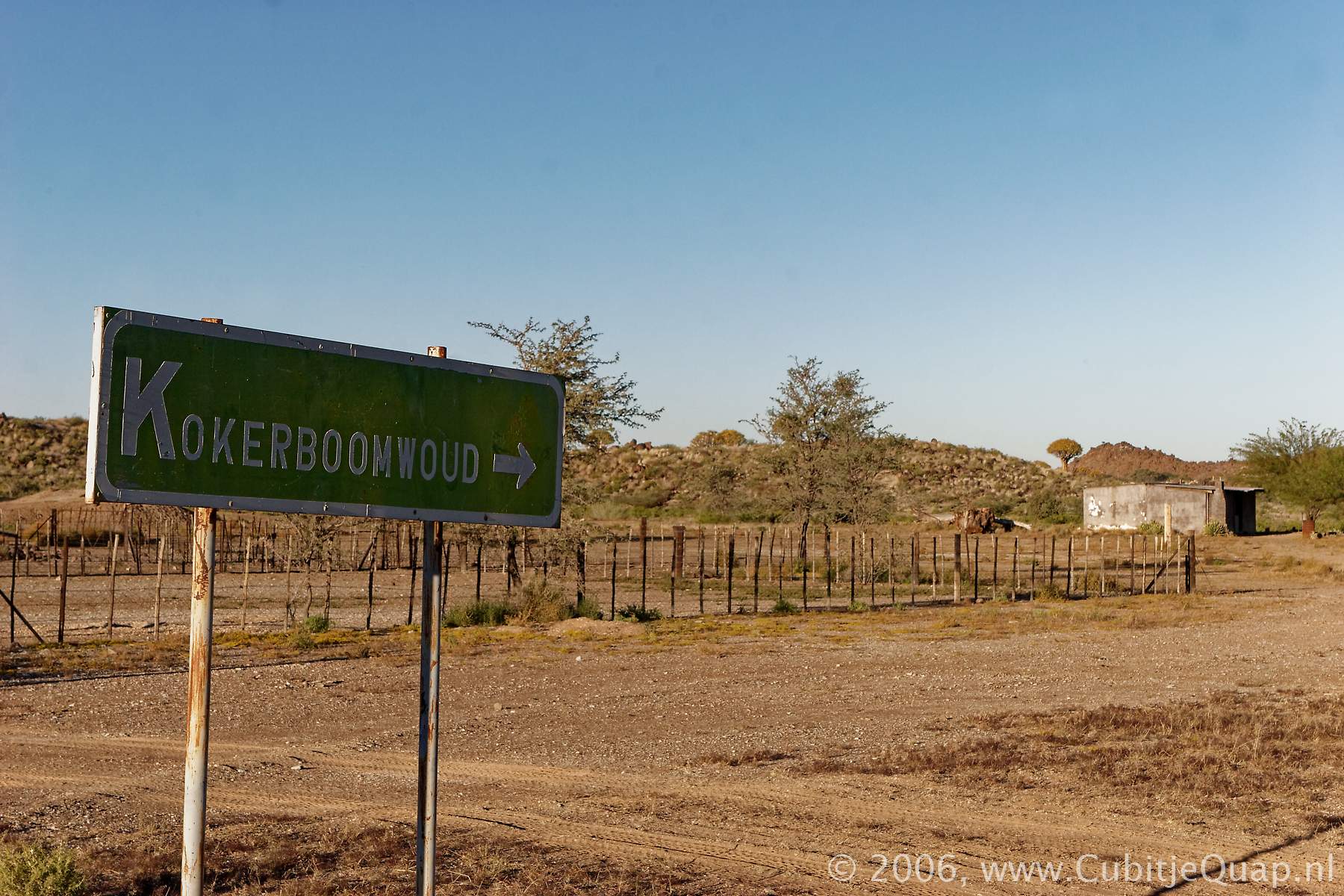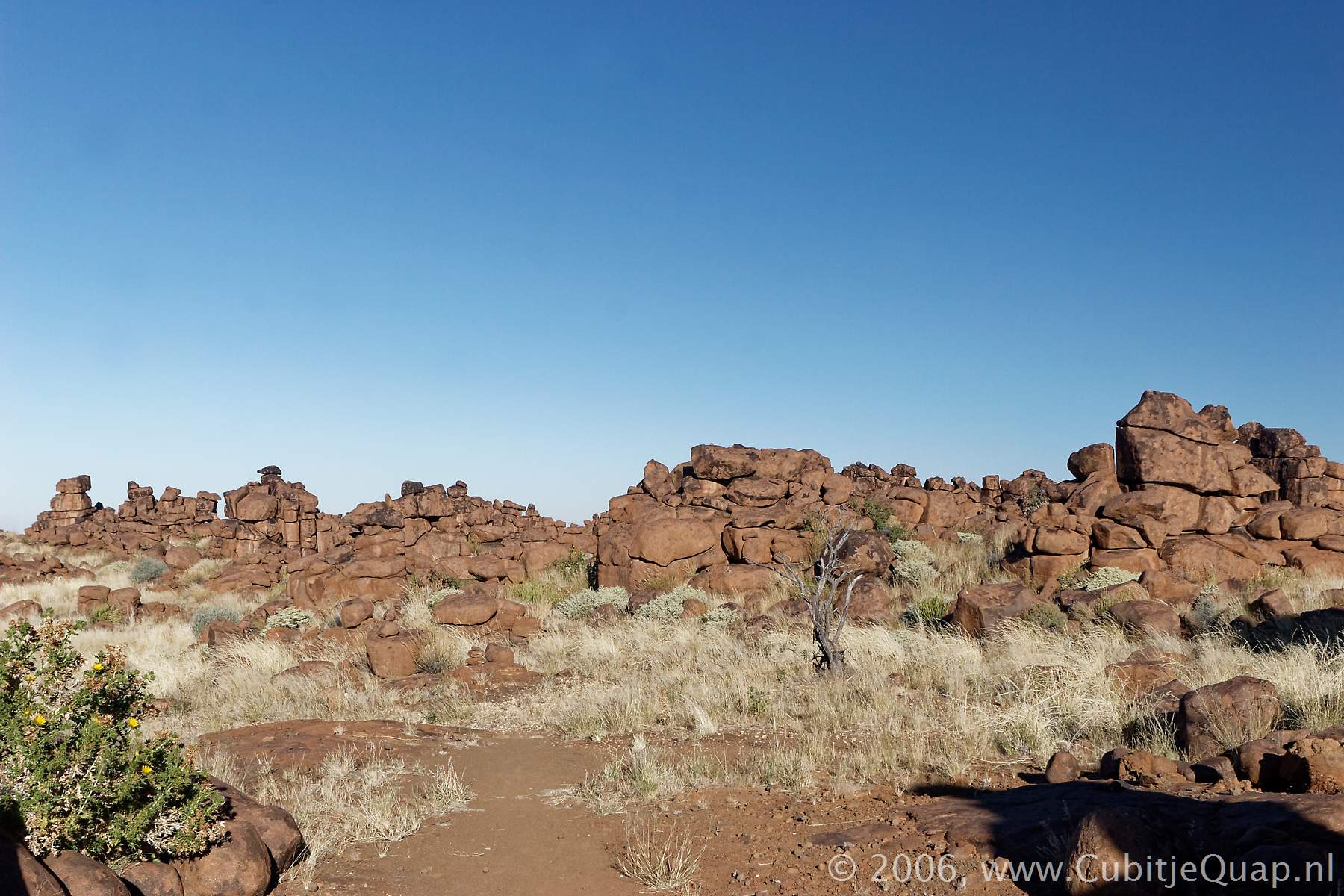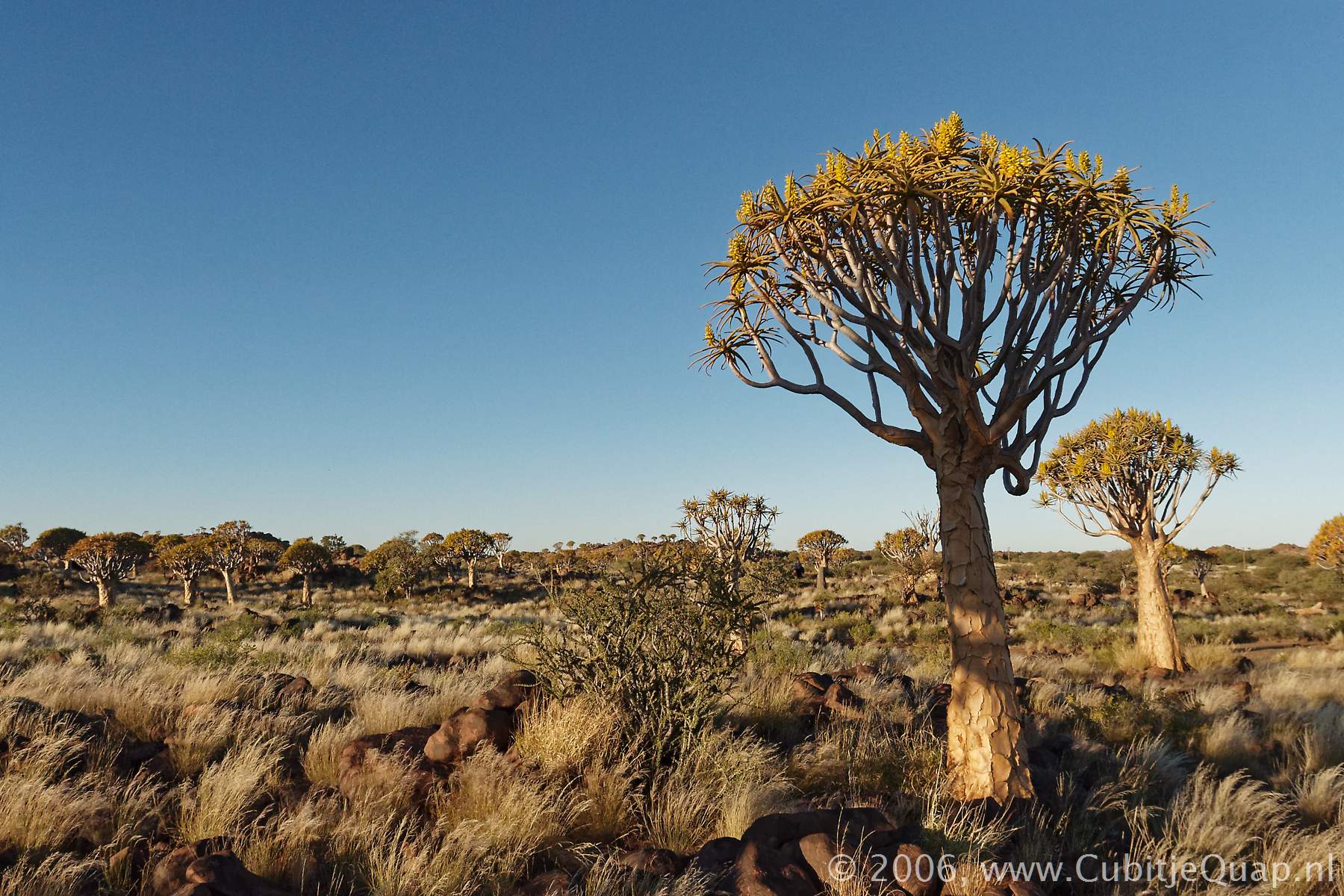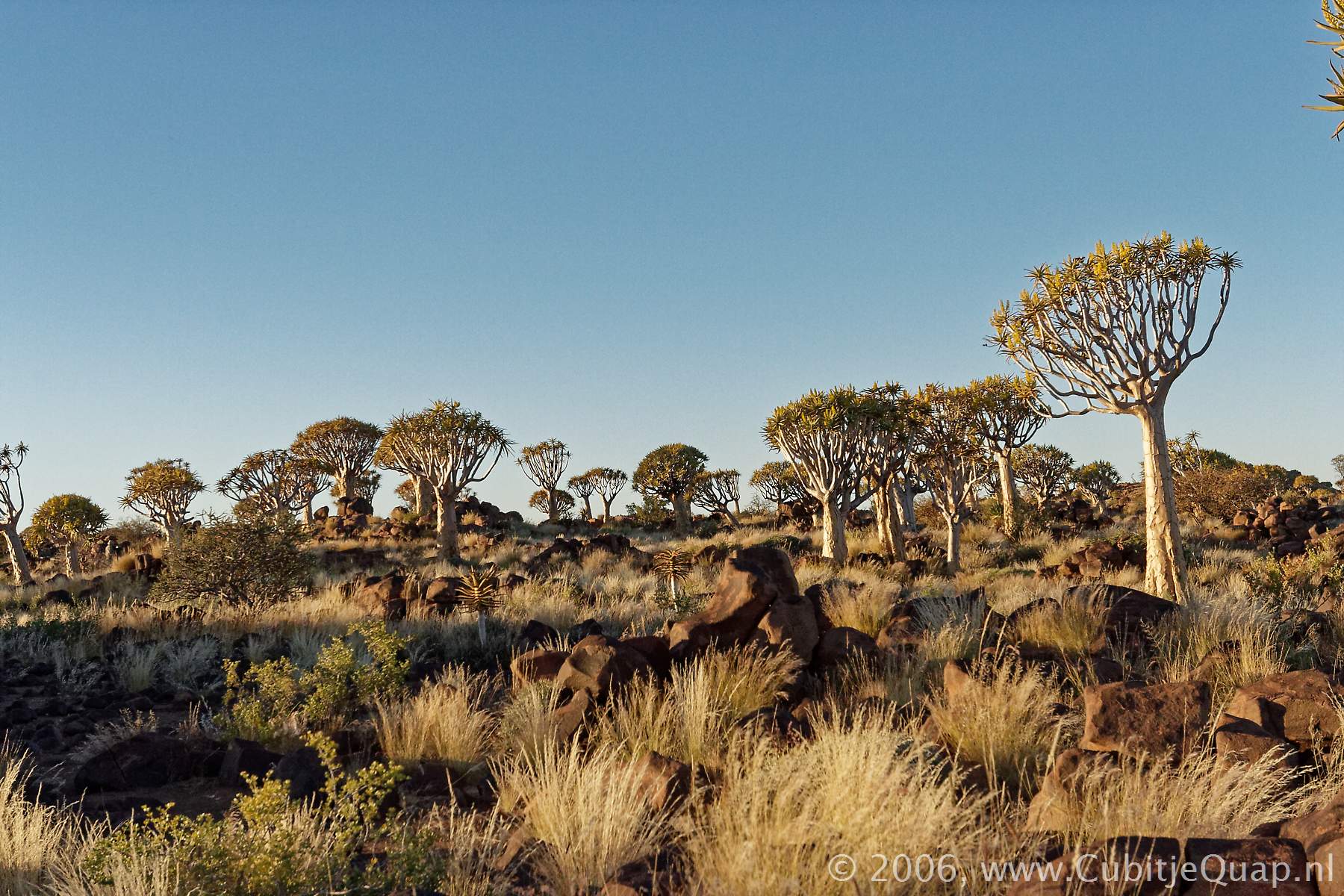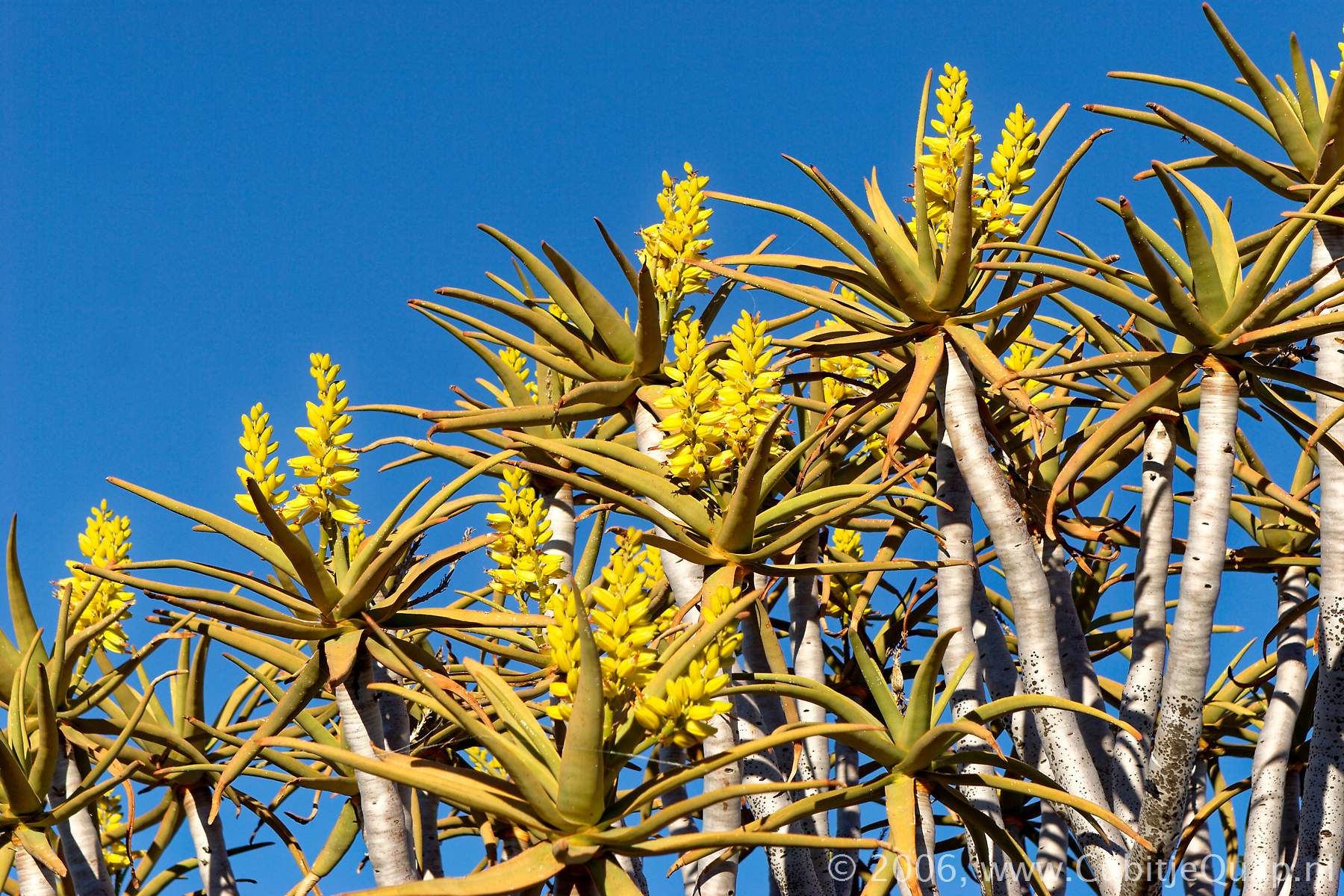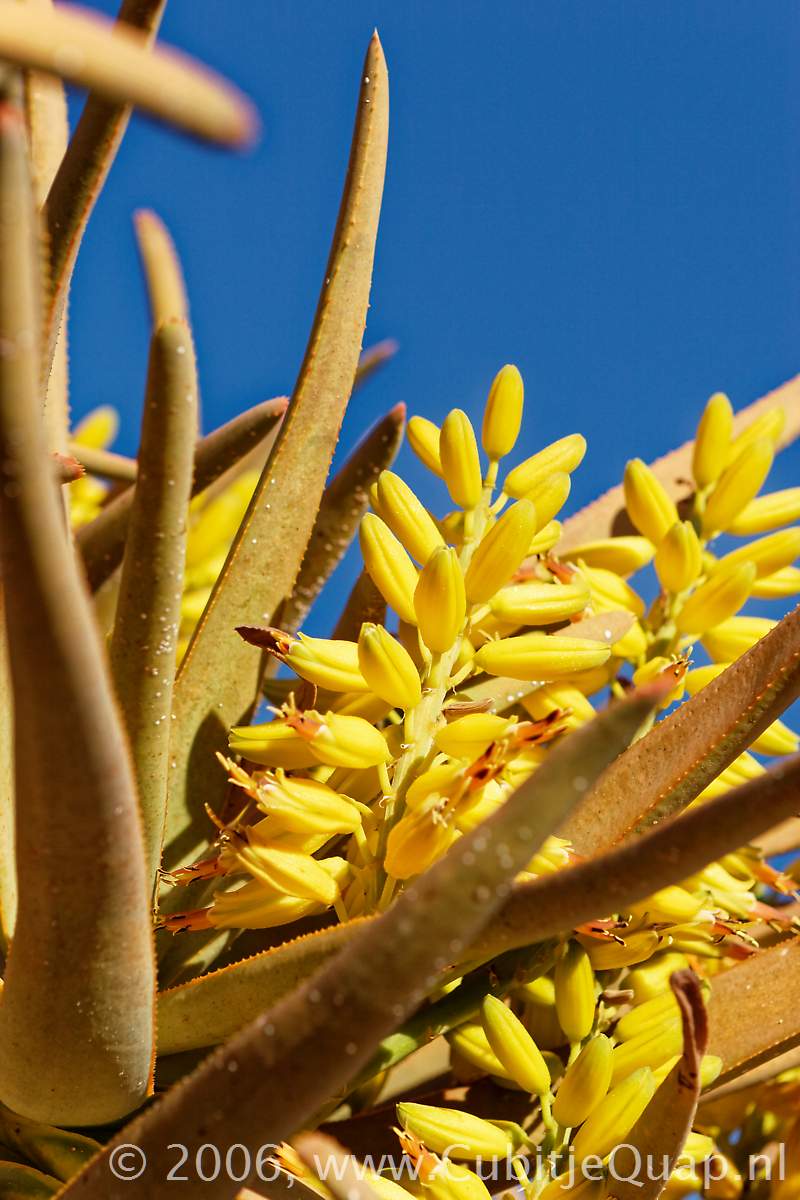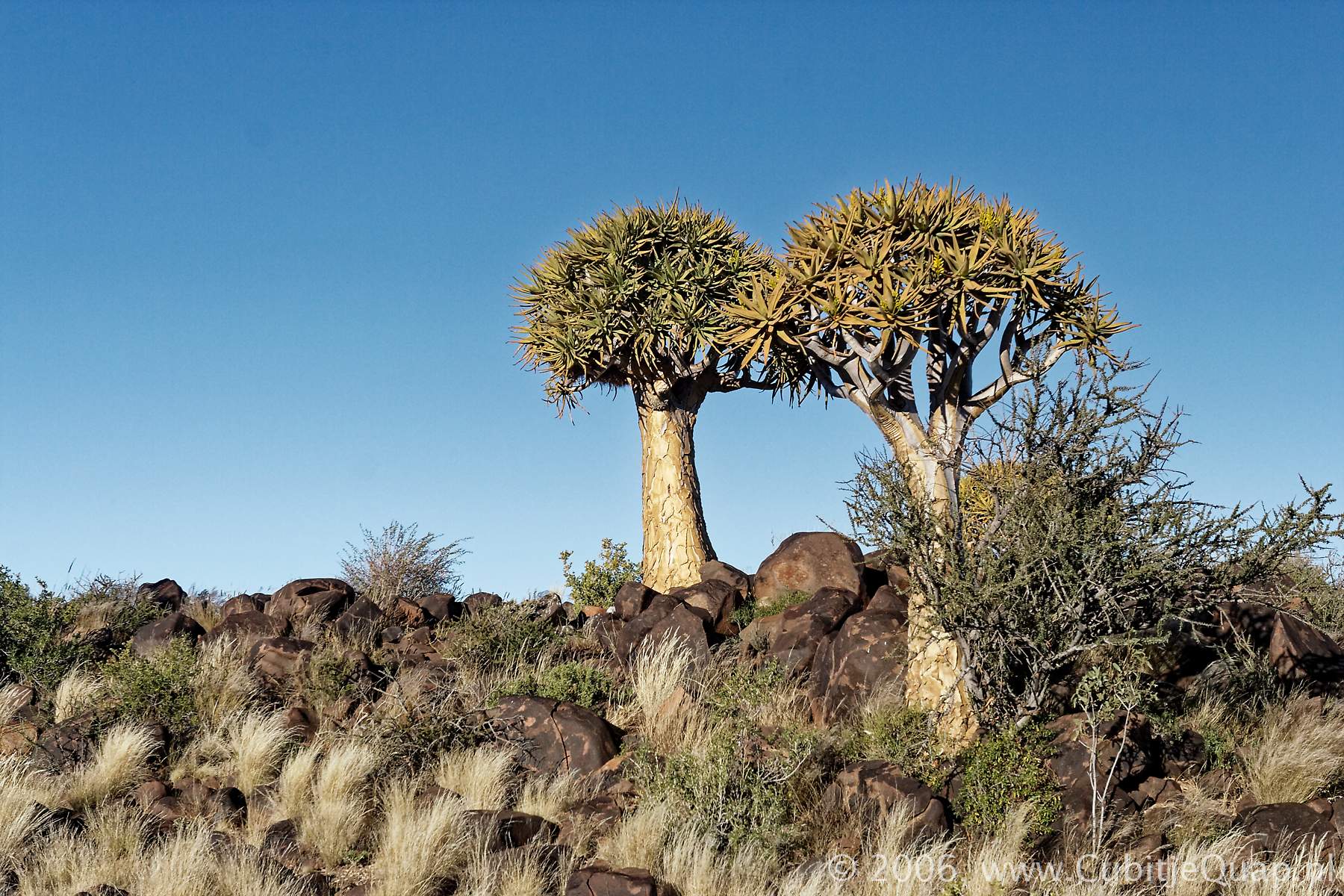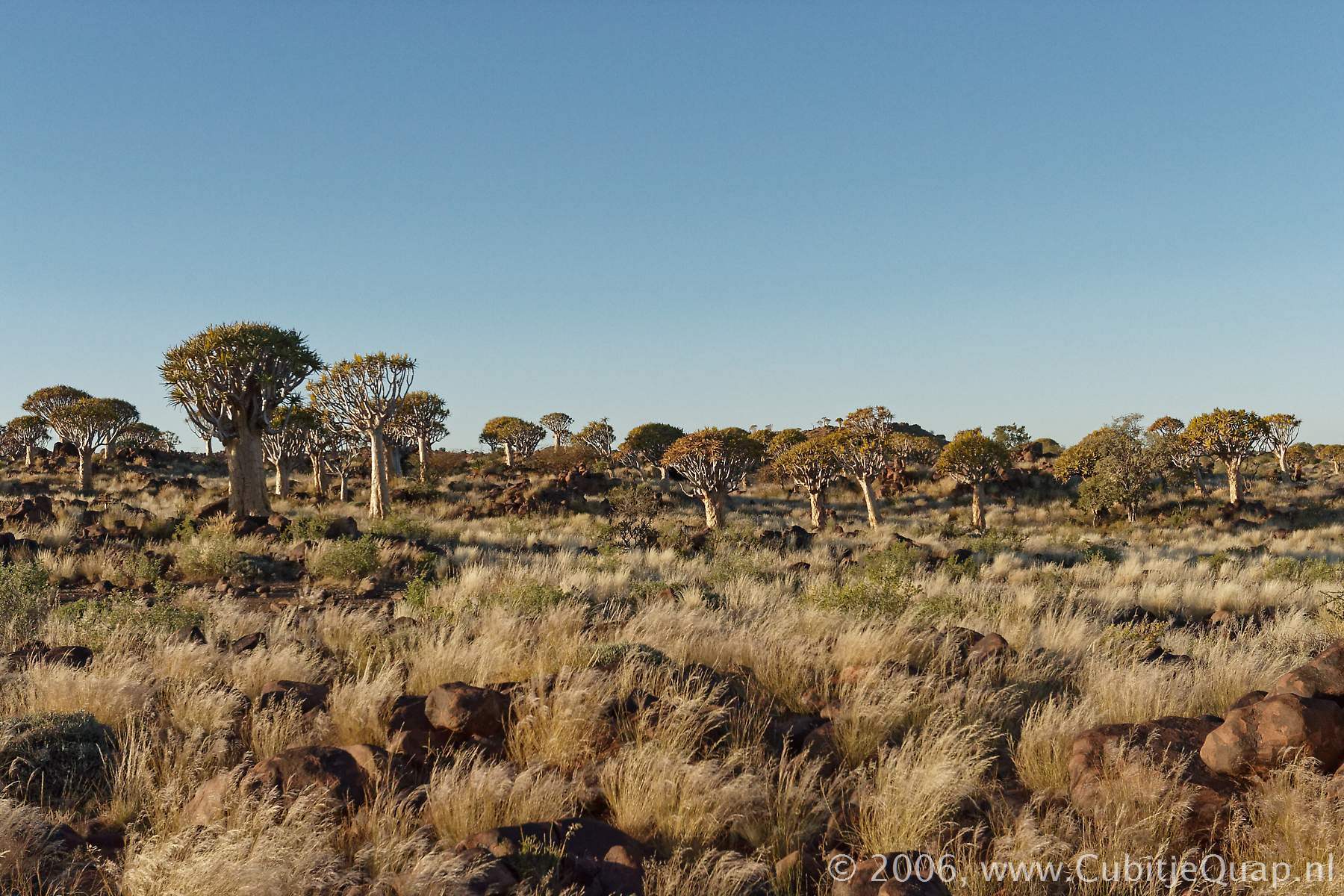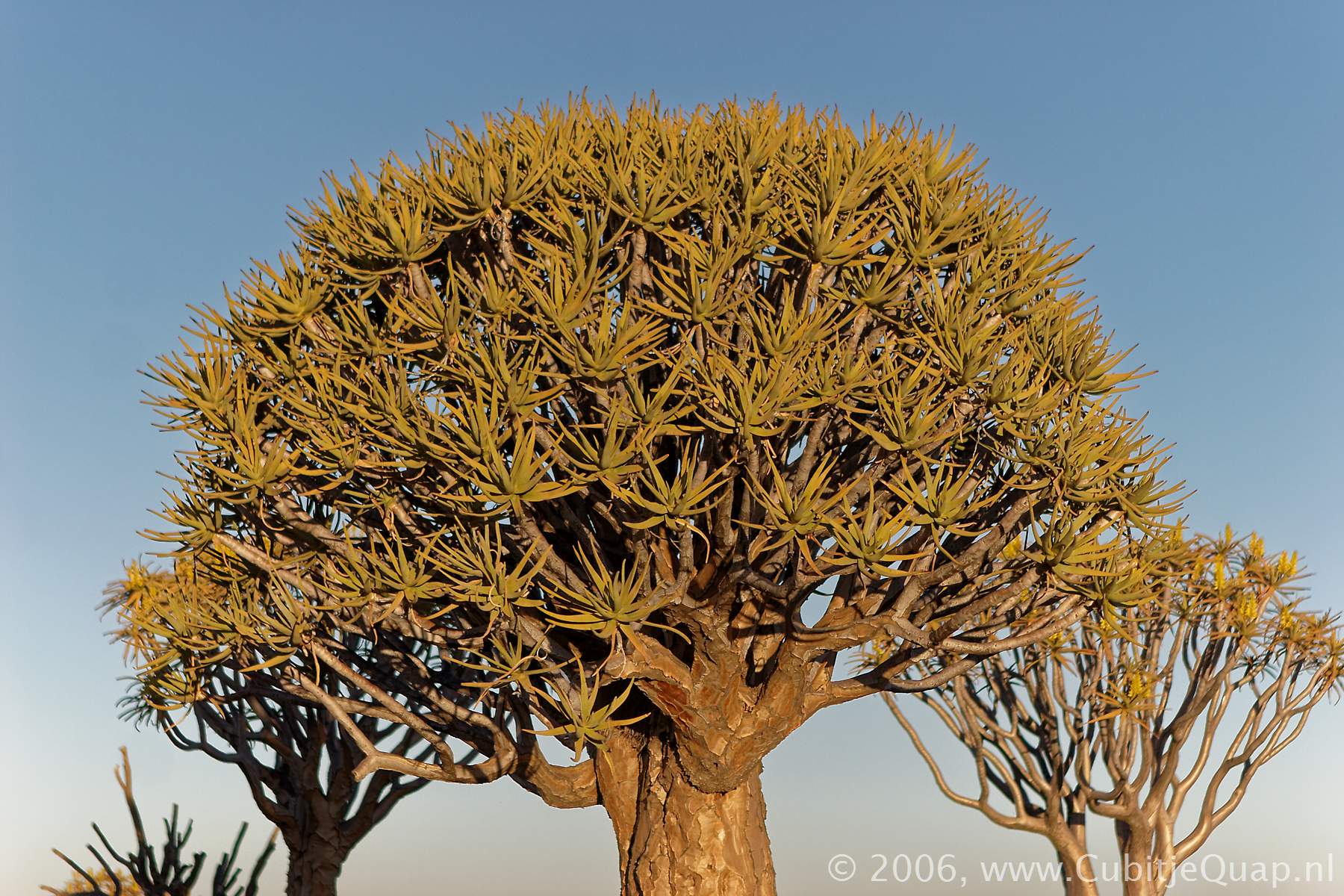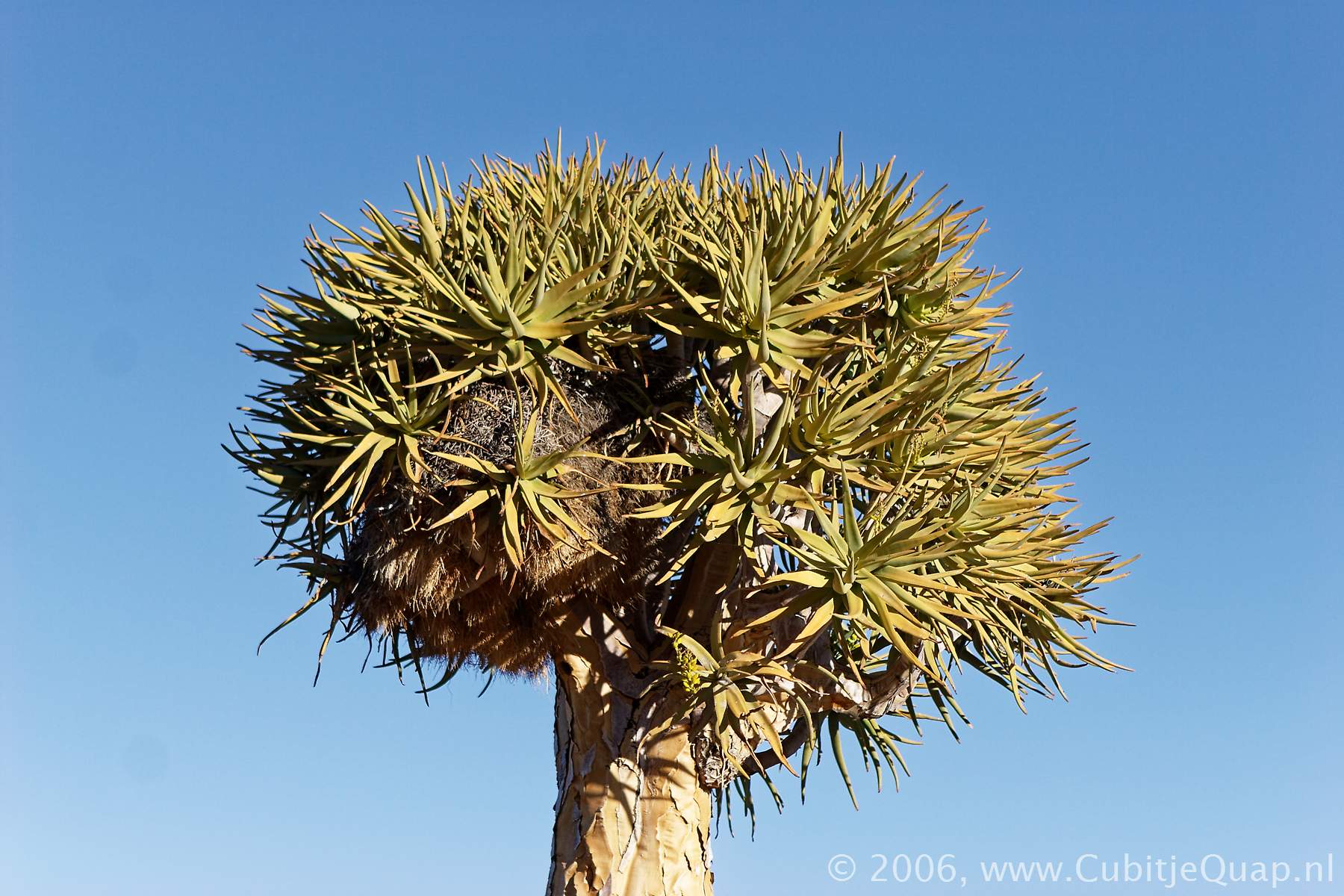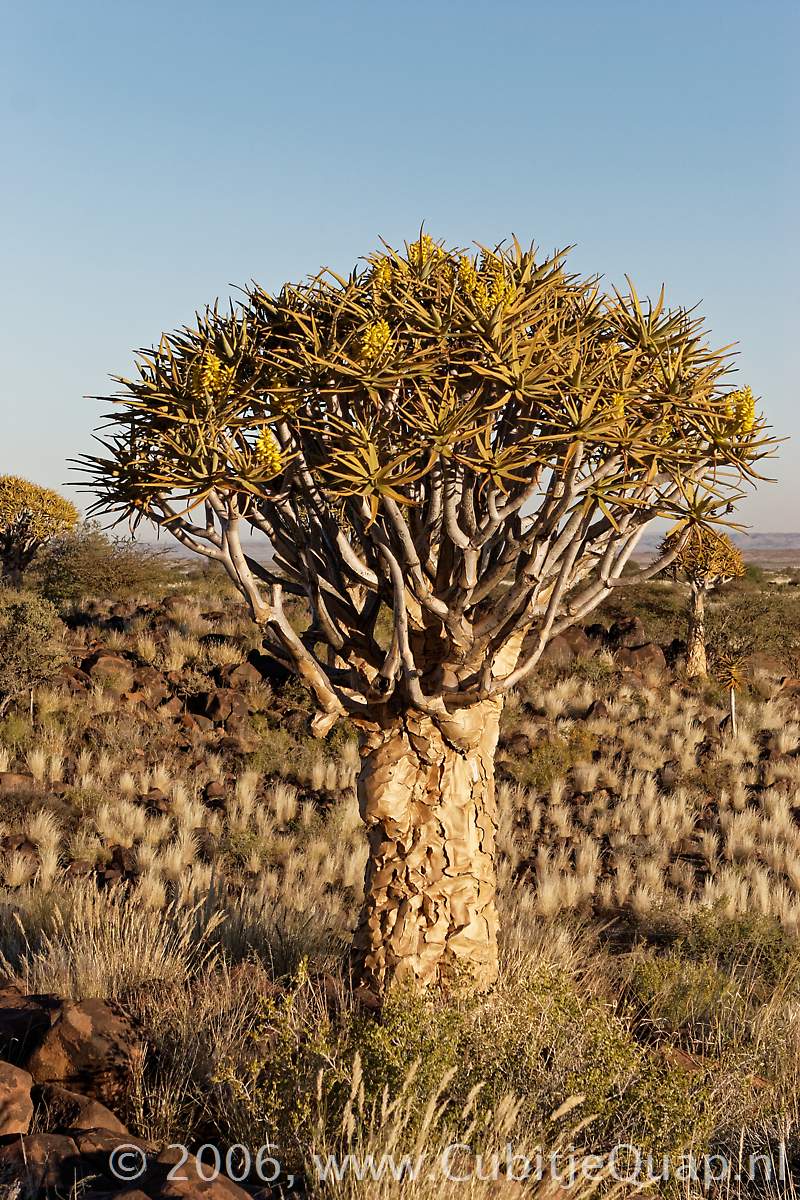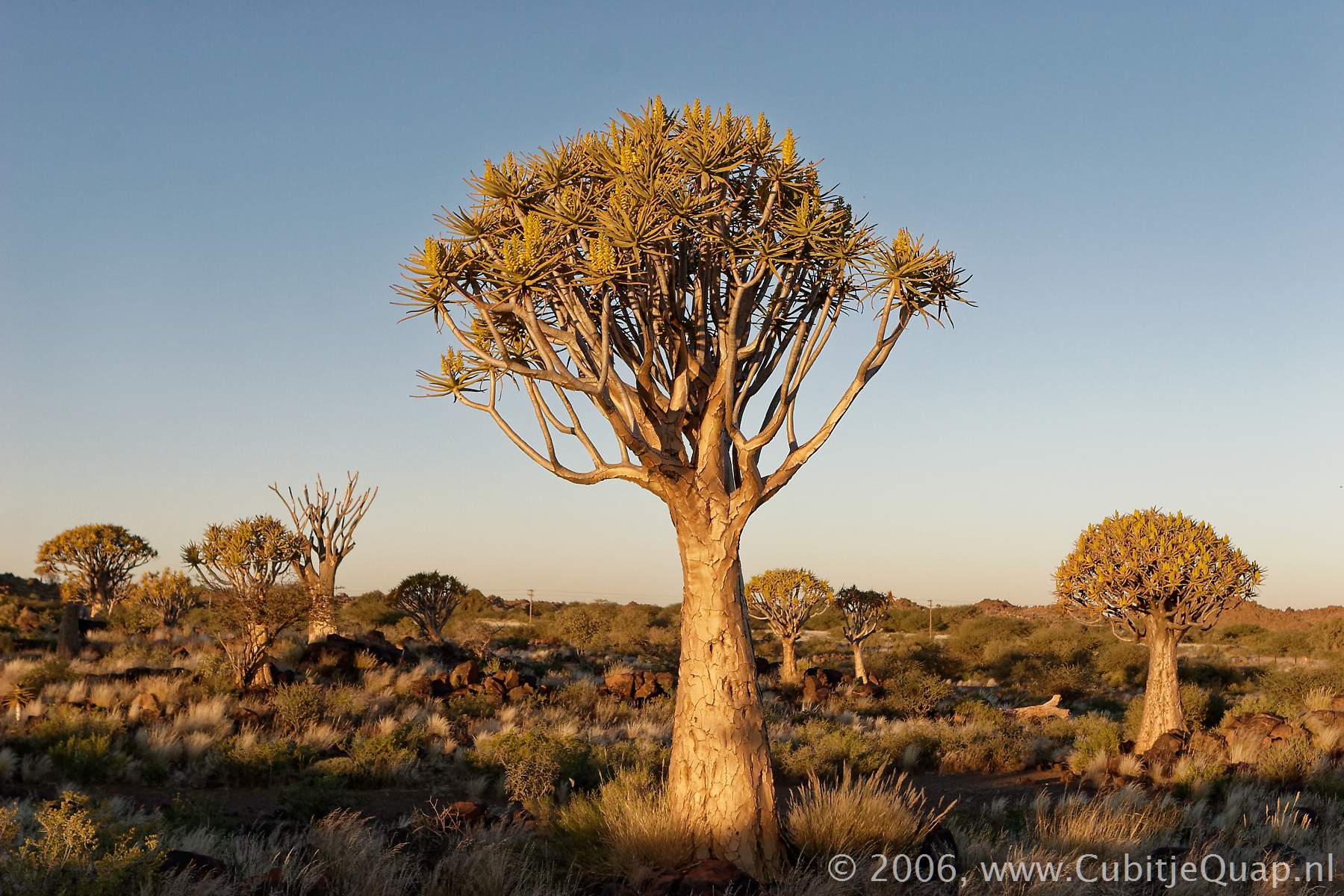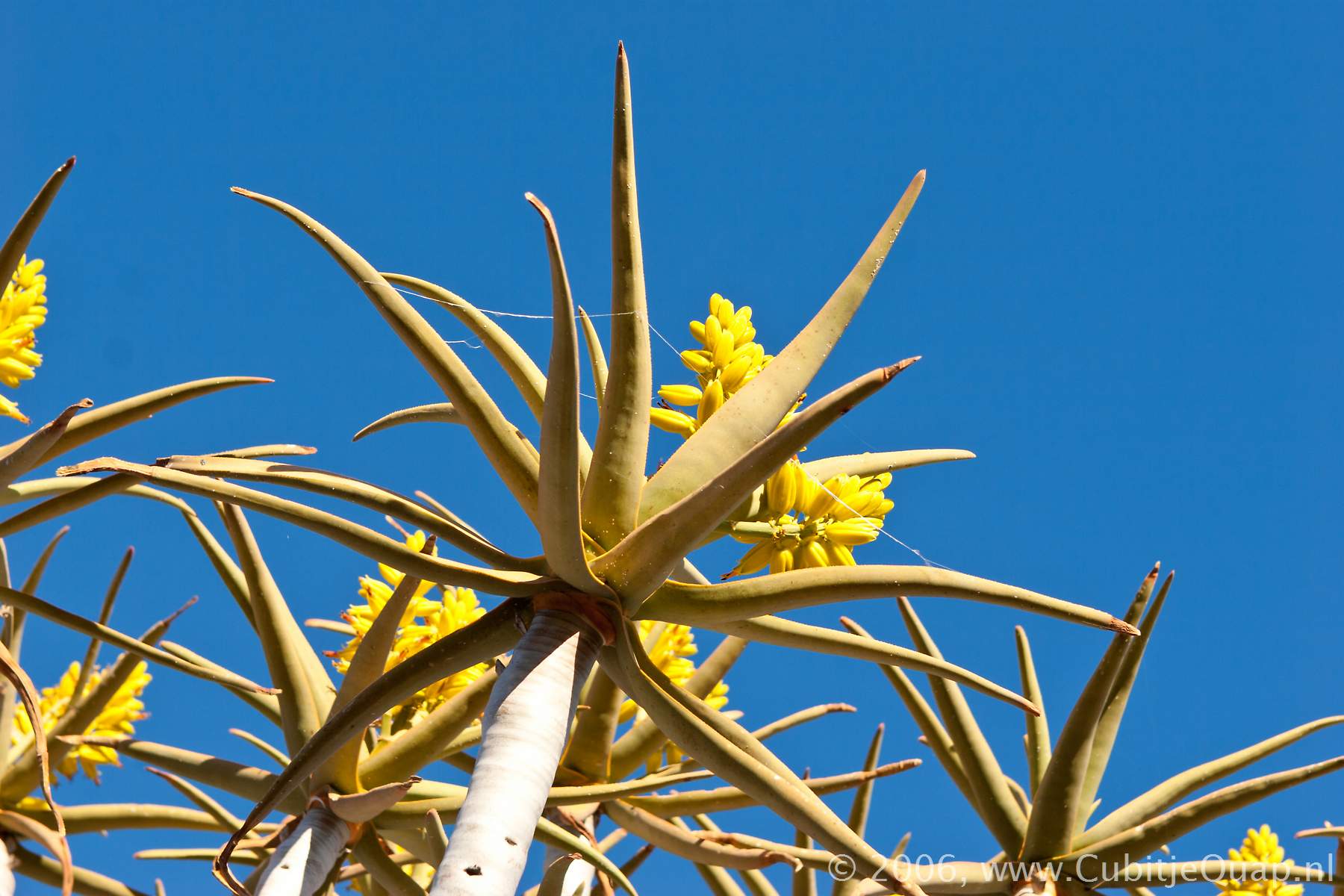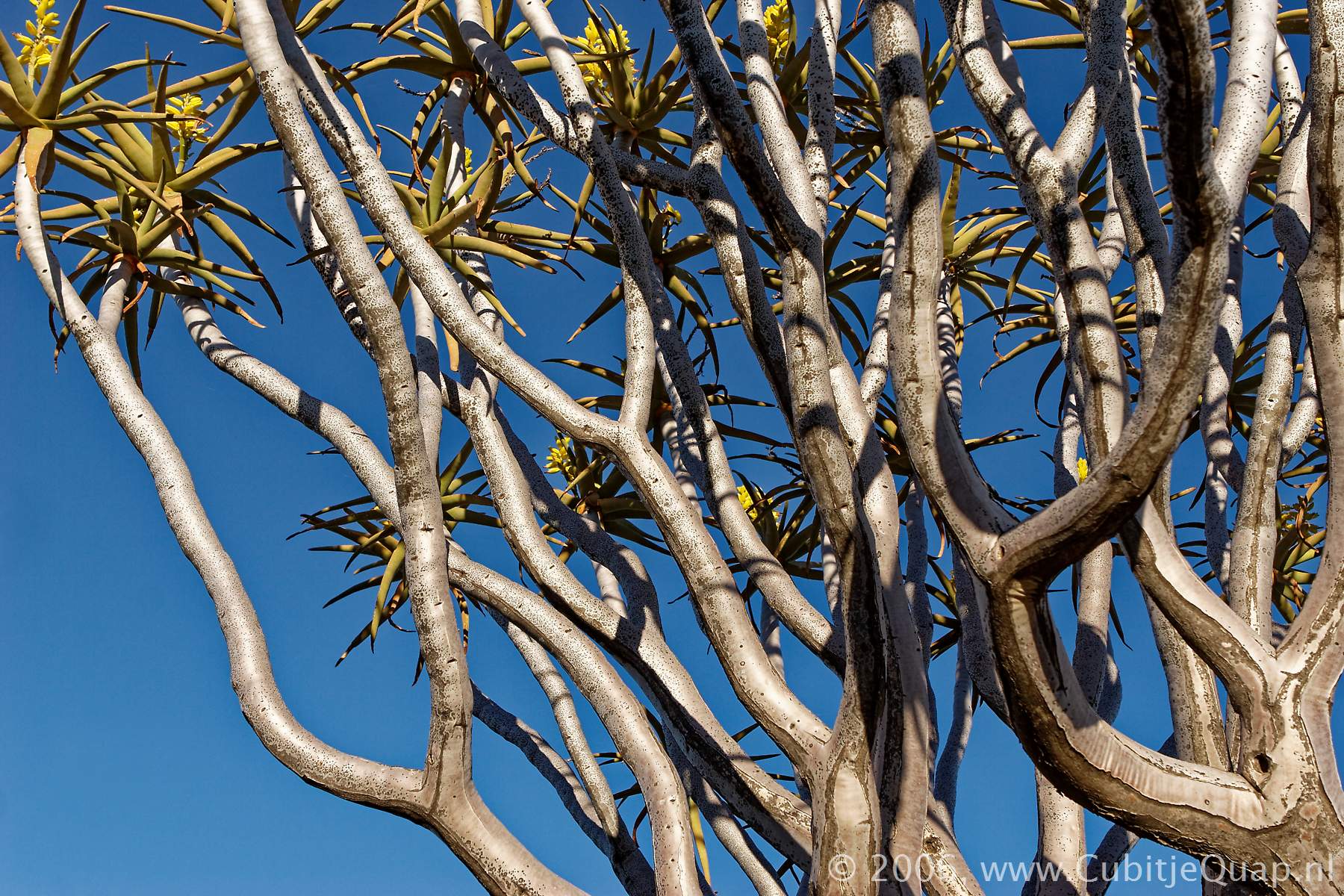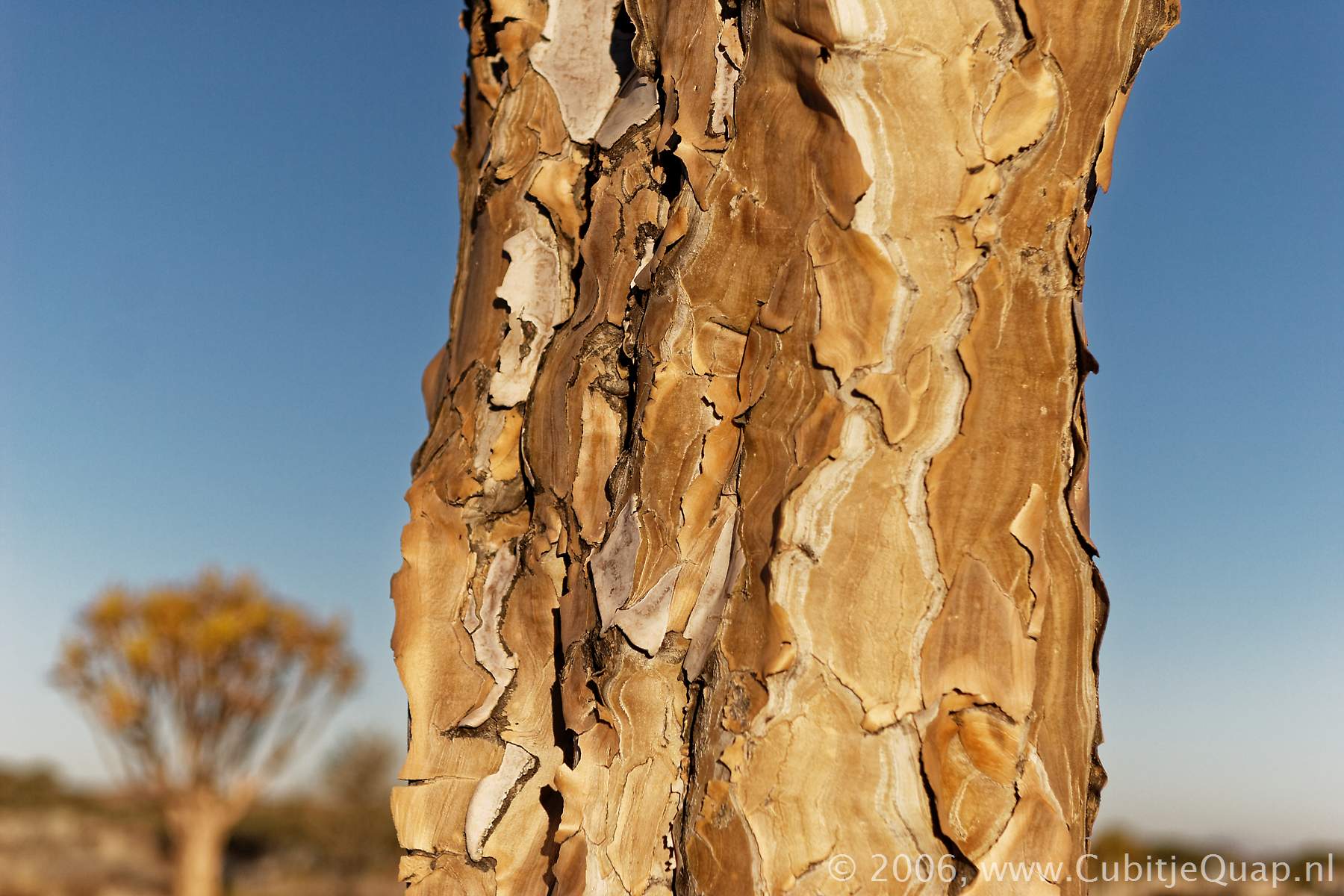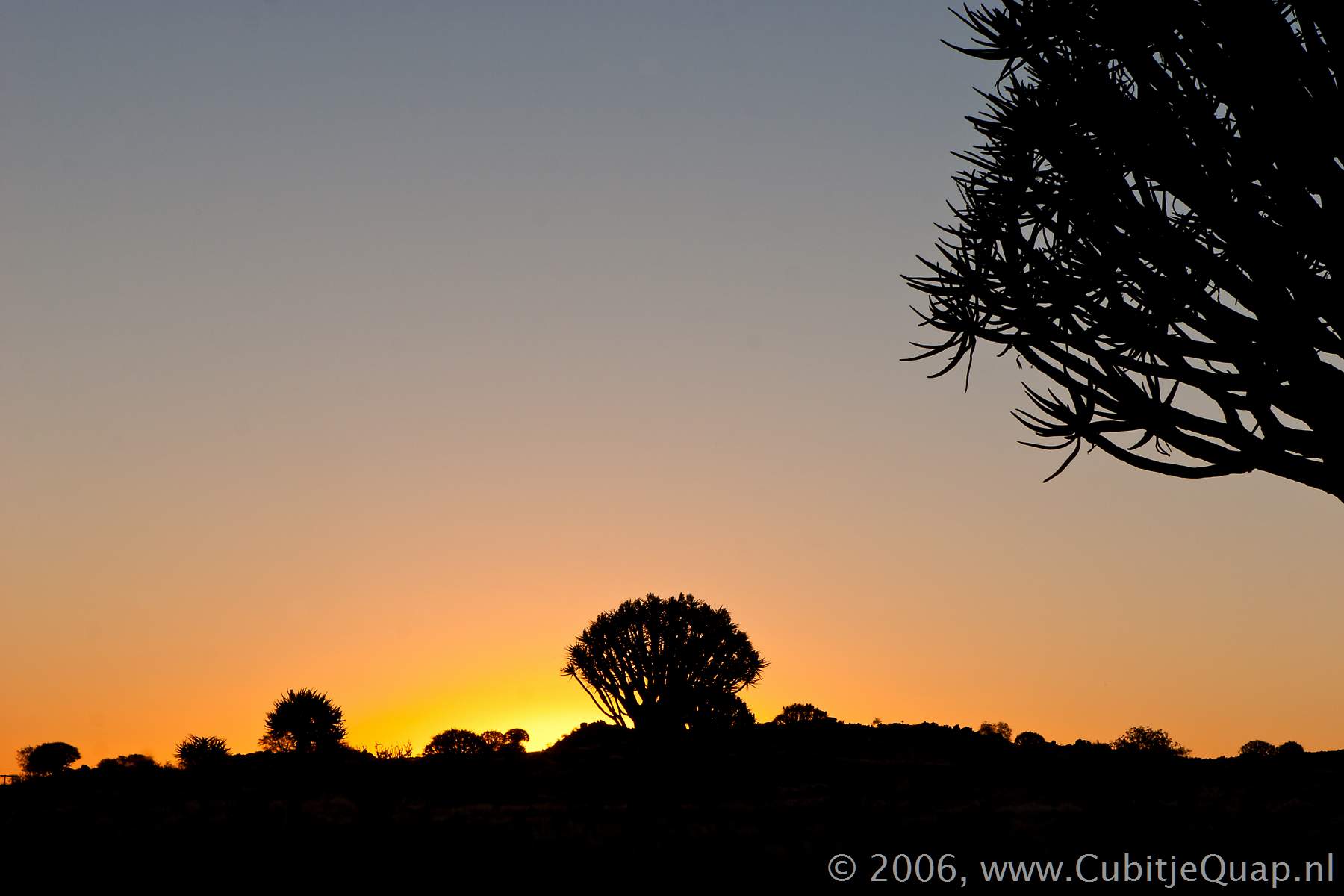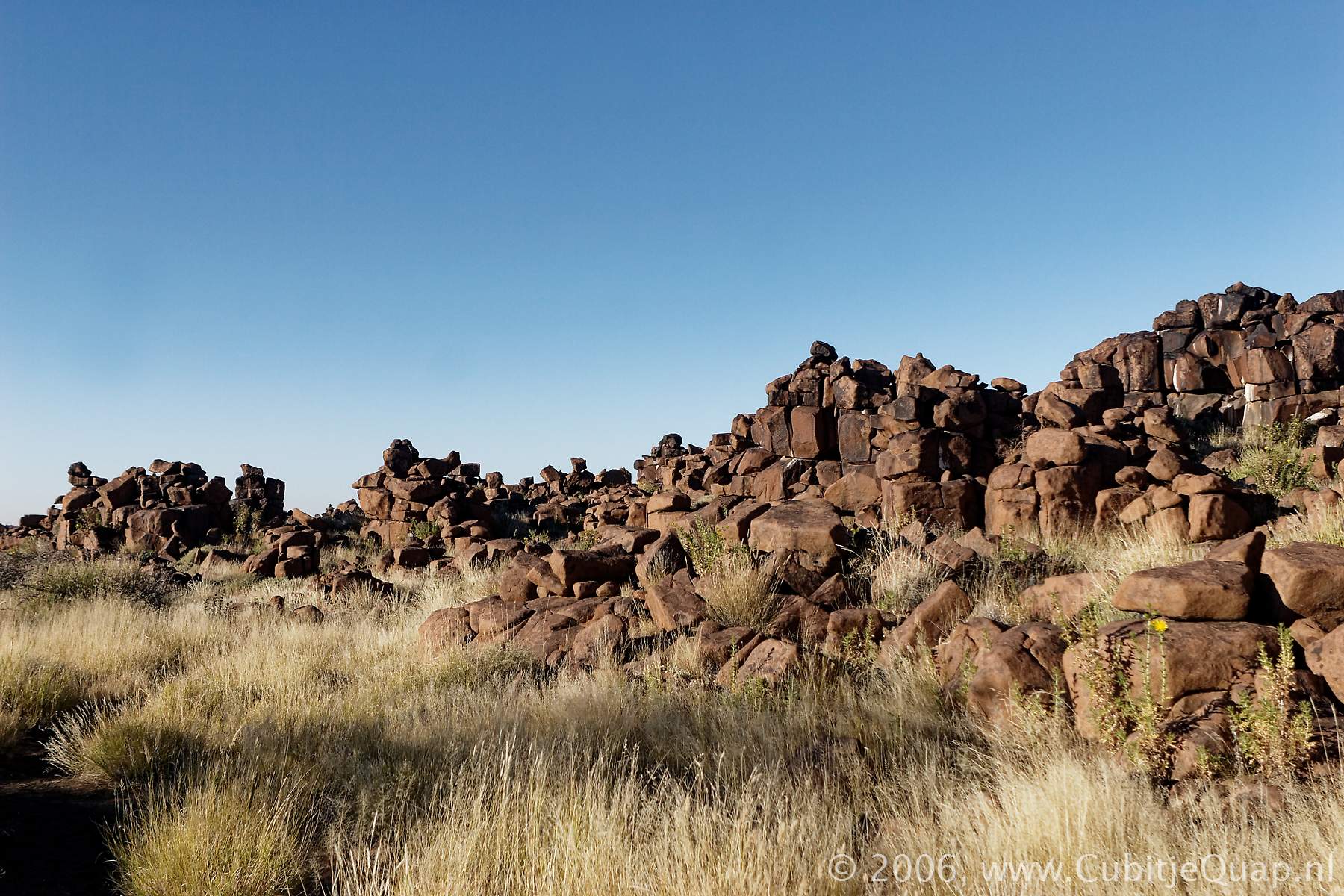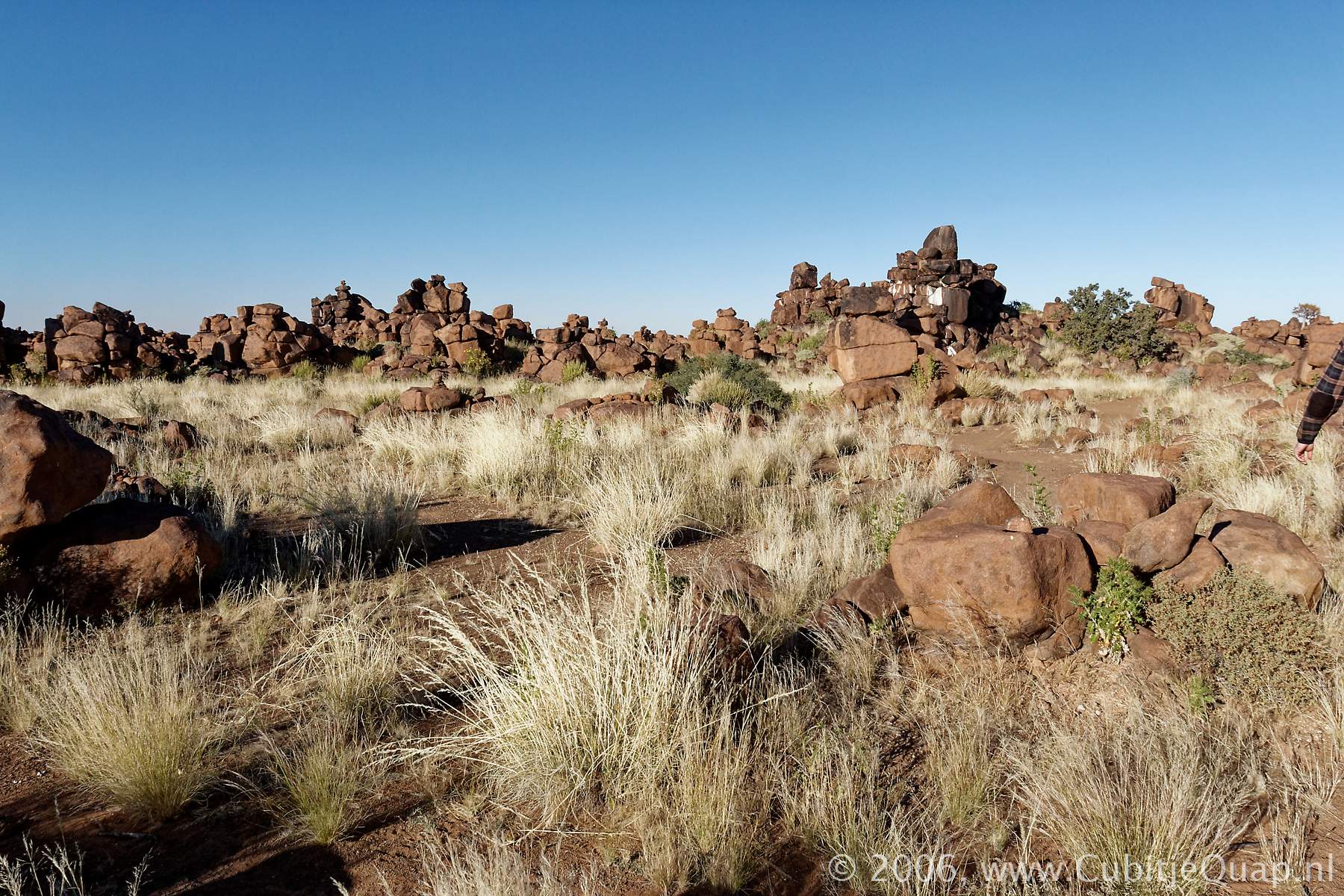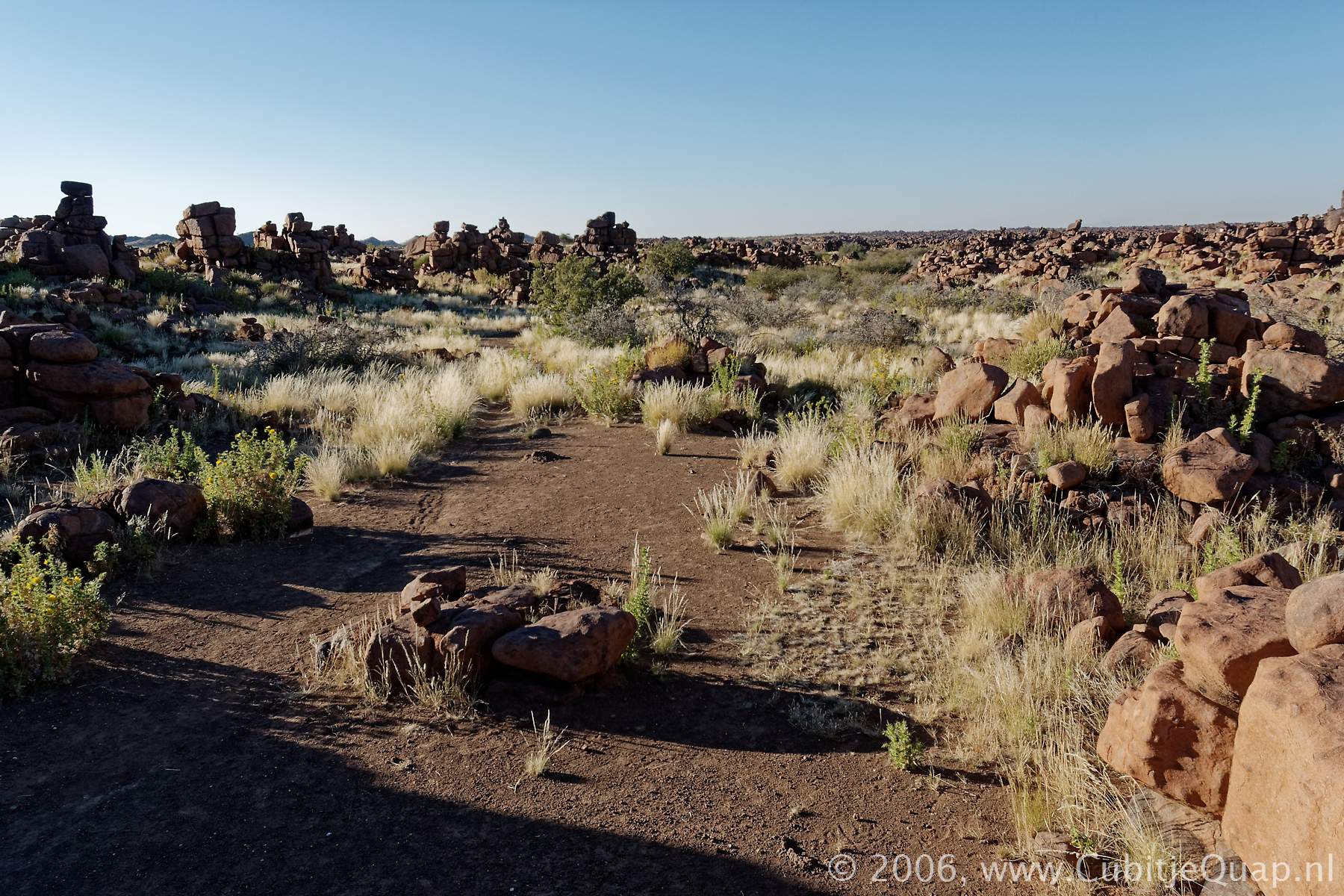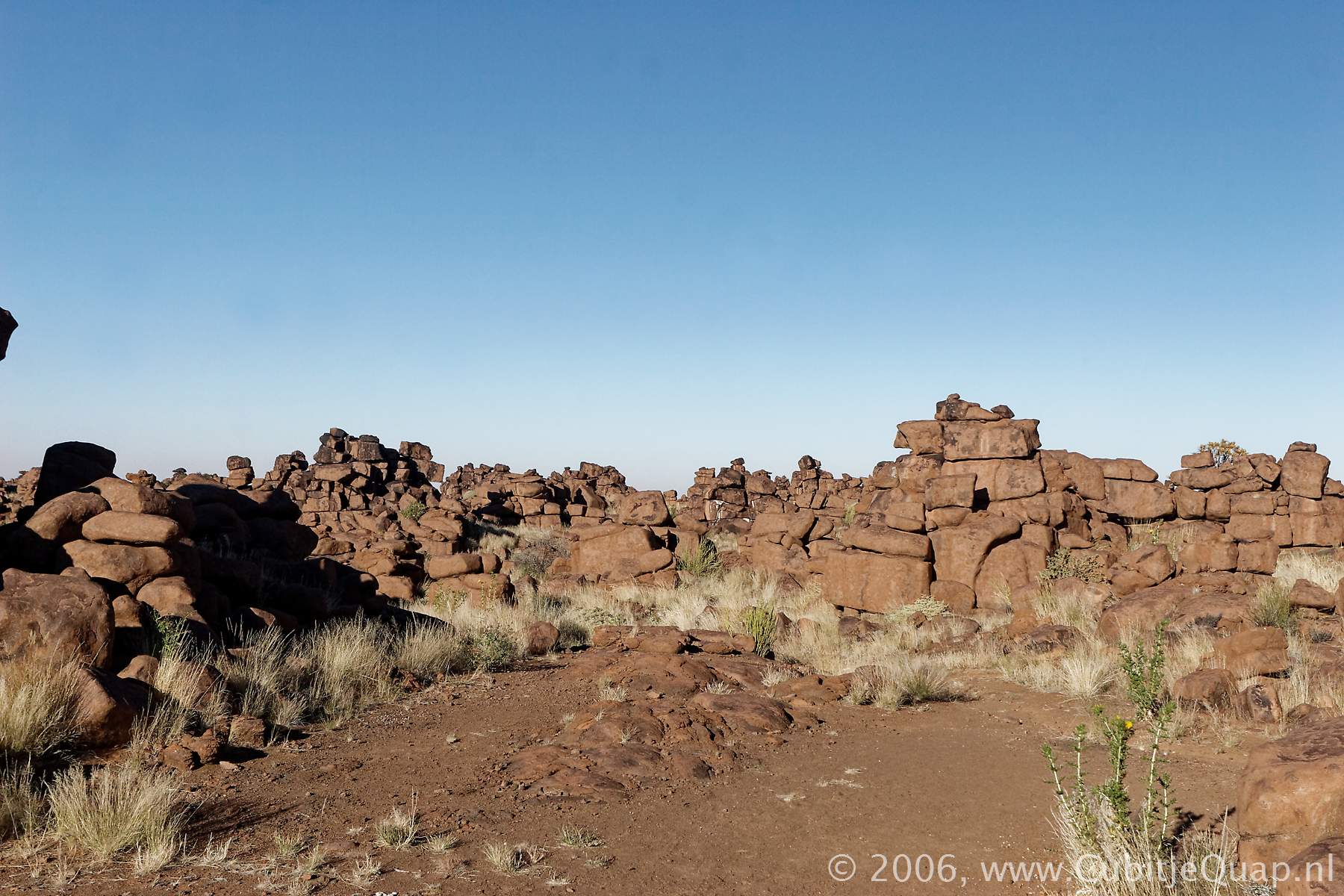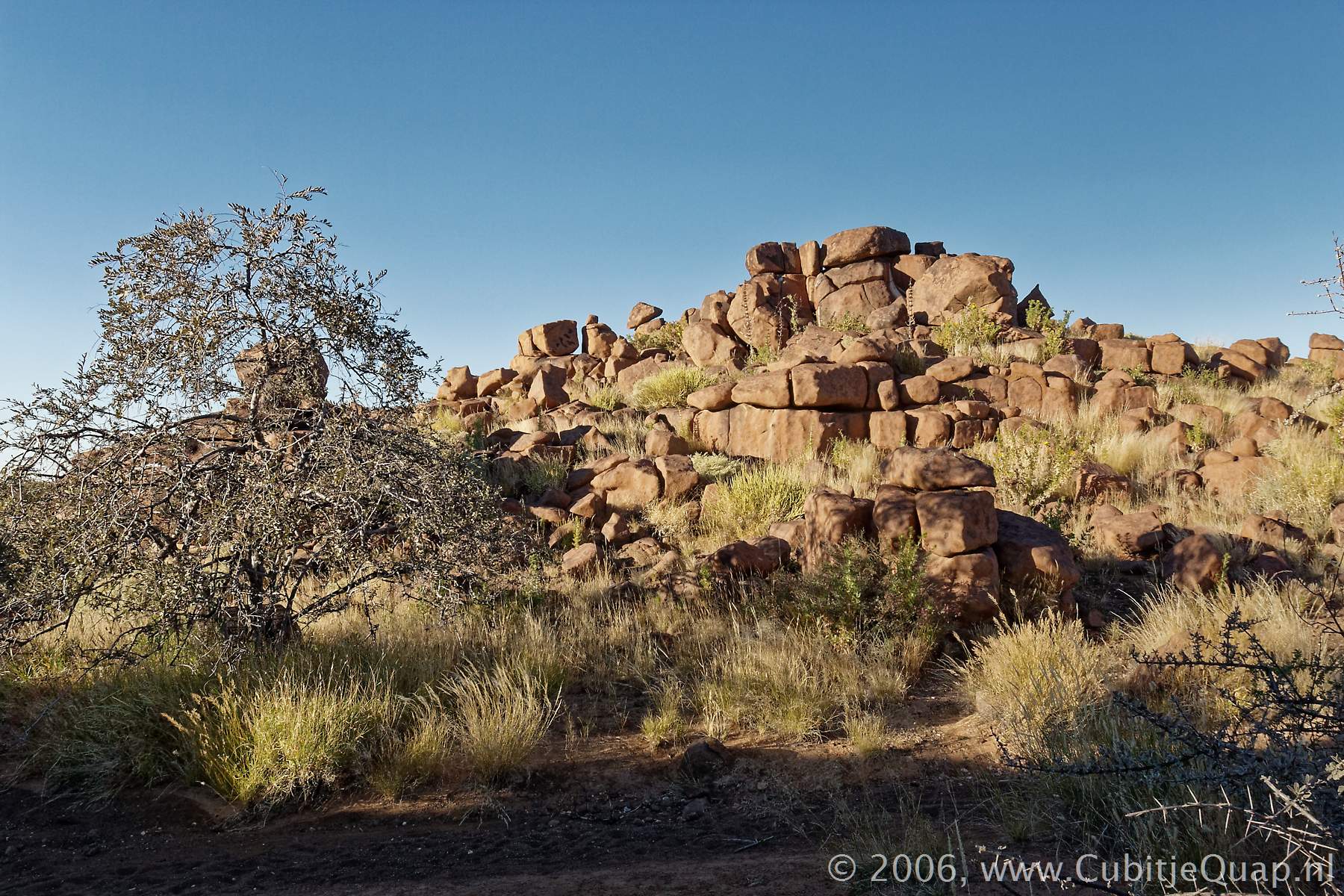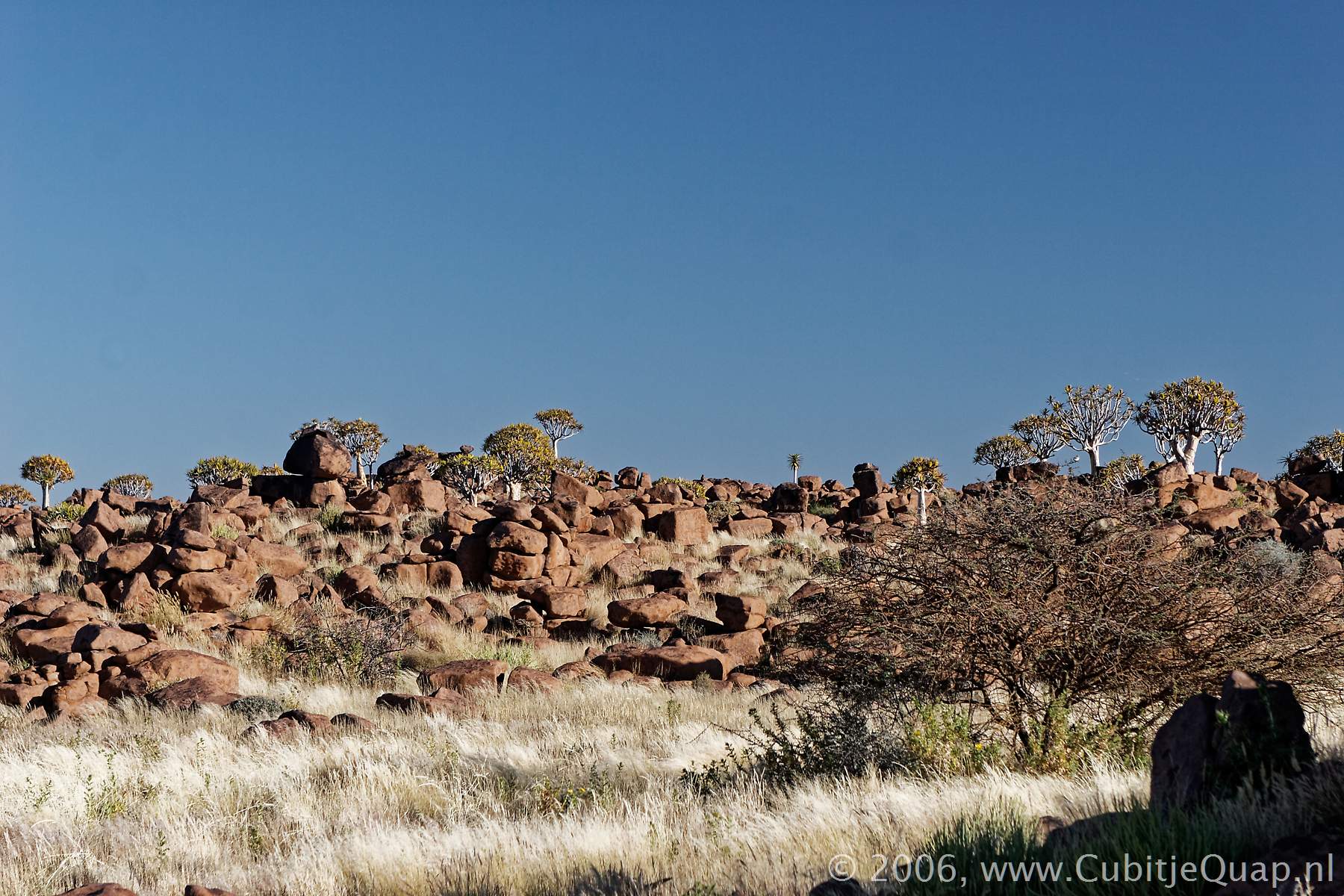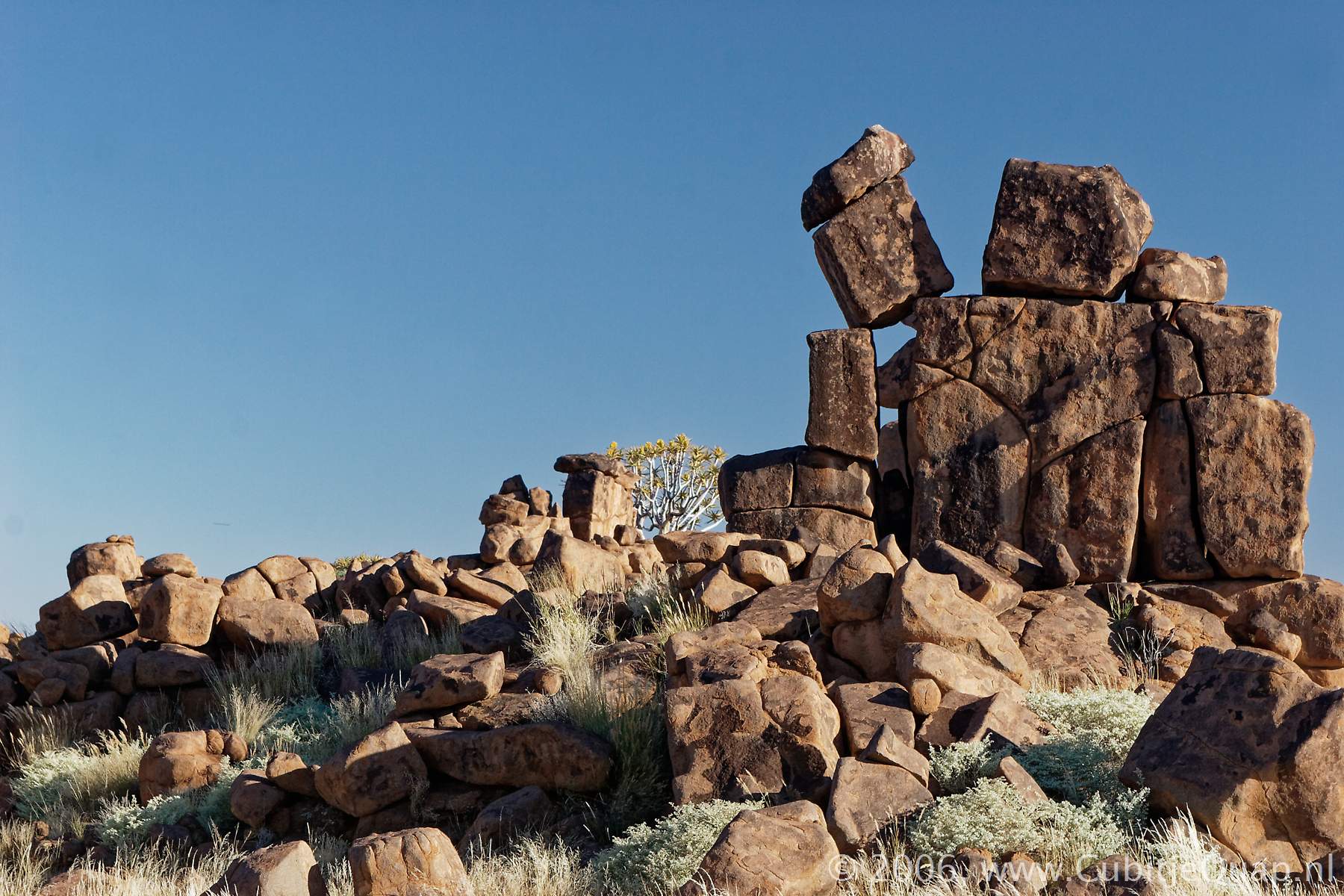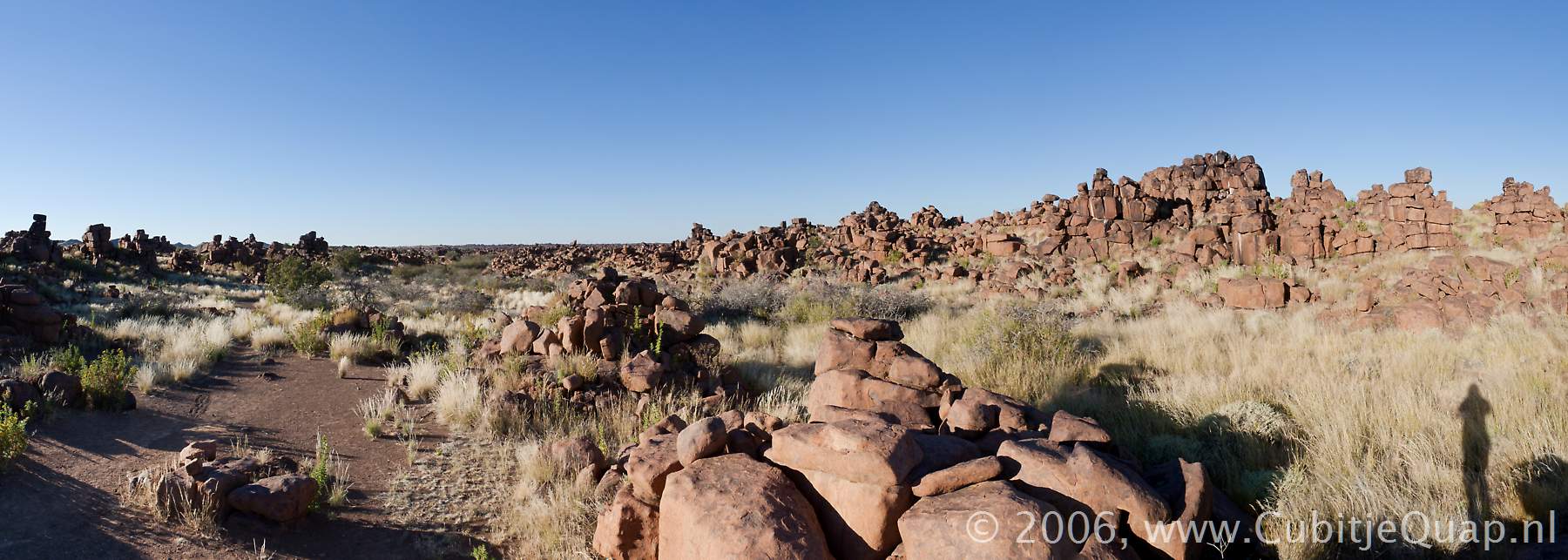Quiver Tree Forest and Giant's Playground
Quiver Tree Forest
Quiver Trees
(Aloe Dichotoma), or Kokerboom in Afrikaans, are indigenous to Namibia and the Northern Cape region of South-Africa. The San (Bushmen) used to hollow the soft branches of the tree to use as quivers. The stem of the tree is formed of beautiful golden-brown scales, whose edges can be razor-sharp. The Quiver Tree flowers in winter (June-July) and the yellow flowers stand close to the leaves. The crown is often nicely rounded as a result of the many forked branches (hence the name: dichotomous means forked). Young flower buds are edible, tasting similar to asparagus.The flowers provide copious nectar, which of course attracts many birds and insects, but also baboons are known for eating it. As the Quiver Tree regularly is the only tree in the area, it often hosts enormous nests created by Sociable Weaverbirds. In the dense crown, young birds are relatively safe from snakes or jackals.
Trees can easily reach an age of about 80 years and grow up till some seven metres high. Hollowed trunks of the dead tree are often used as fridge, as the fibrous wood cools the air passing through it.
Quiver Tree Forest is one of the few known places where many Quiver trees grow rather close together. It is located near Keetmanshoop on farm Gariganus and was declared a National Namibian Monument in 1935; the trees itself are protected species.
Giant's playground
Giant's playground is located near Keetmanshoop, just some 5 km northeast of Quiver Tree Forest, is an area covered with big basalt rocks, balancing precariously on top of each other. The formations were caused by the erosion of sedimentary rocks about 170 million years ago.

